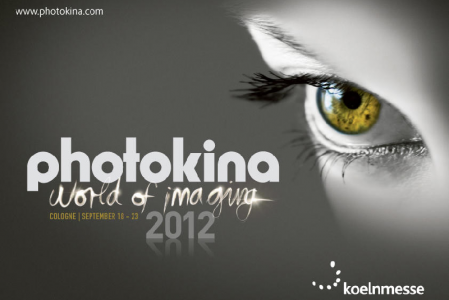Q&A with Panasonic: The story behind the new video-centric GH3 and other compact system camera tech advances
posted Friday, September 28, 2012 at 7:36 AM EST

During Photokina 2012, Imaging Resource's founder and publisher Dave Etchells interviewed five senior executives from Panasonic about the company's latest technologies and cameras, especially the newly released, single-lens mirrorless GH3.
The panel of executives from Panasonic Corporation included:
- Michiharu Uematsu, Special Adviser, Merchandising Group, Imaging Network 1 Business Unit, Imaging Business Group, AVC Networks Company
- Yoshiyuki Inoue, Senior Engineering Planner, Merchandising Group/Marketing Planning Team, Imaging Network 1 Business Unit, Imaging Business Group, AVC Networks Company
- Masanori Kouyama, Senior Coordinator, System Camera Planning Team, Product Planning Group
- Takeshi Kuraku, Manager, Marketing, Team for Americas, Network Products Group, Digital Imaging
- Takashi Mori, Councilor, Communications Team, Communications Group, AVC Marketing Division, Global Consumer Marketing Sector
Please note that because it was an open, free-flowing panel discussion and we couldn't be 100% certain of accurately attributing the answers to each executive, we've simply attributed the answers to Panasonic as a whole.
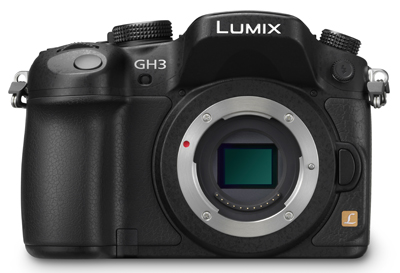
Dave Etchells: Our first question comes from our editors and readers who all want to know: Are we correct in understanding that the GH3 no longer has a multi-aspect ratio sensor? What was the reason the GH1 and GH2 were multi-aspect? Why did you not go with that design for the GH3?
Panasonic: Our main priority was image quality, both for stills and movies. For our former models, the GH1 and GH2, we developed a special sensor that was a little bigger than Four Thirds. However, because we wanted to make so many improvements with the GH3, we didn't have a larger sensor available. The Four Thirds-size sensor was what was available from our sensor group.
DE: We saw something in the GH3's press release that talked about the electronic shutter eliminating "pixel declination." Is that another name for rolling shutter? How did you get rid of rolling shutter? Does the camera expose each frame all at once?
Panasonic: Actually, we can't use a mechanical shutter for video, and for each exposure, we use a certain number of lines. Just before the exposure, we reset and then expose, and then read out. This means that from the top of the frame to the bottom, it takes around one tenth of a second, or 100 milliseconds, to read out.
DE: It sounded like the press release was saying that there is something different about how the GH3 reads out the data, though. Could it be that at the beginning of each frame, the whole sensor is reset and then you read the data out, whereas previously, you were reading down, and then started back at the top before the current scan was completed?
Panasonic: It's actually not possible to reset the whole sensor, because it's a CMOS, not a CCD. Instead, you can reset each line separately, and also read out separately. How many lines you're resetting, capturing, and then reading out at once sets the shutter speed. This means from top to bottom, the readout speed is limited to around 100 milliseconds. Of course, 100 milliseconds is longer than some other cameras like the Nikon 1, because it has only 10 megapixels, and we have 16 megapixels. Our sensor isn't specially designed, so it just scans normally.
DE: Have you been able to include focus peaking with the GH3? We have been hearing from a lot of GH2 users requesting this feature.
Panasonic: At this moment we don't have focus peaking, but 80% or 90% of users are asking for it. If we can successfully negotiate with the engineers, it will be possible. Maybe with a firmware upgrade, we could add this. We understand from the technical division in Japan that the peaking function just depends on software improvements.
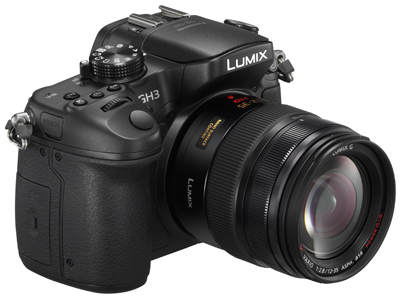
DE: Is it a matter of being able to do the processing needed for focus peaking and still keep the frame rate high enough?
Panasonic: Contrast AF finds the peak contrast, so we can use the same process to show focus peaking during manual focus; it wouldn't be too difficult. The reason we couldn't include it in the GH3 was just a matter of available engineering resources. Of course, we have to make priorities, and this is one of our top priorities.
DE: A very similar question, and probably the same answer, relative to zebra stripes for showing overexposure. Same story there?
Panasonic: Possibly.
[Ed. Note: My impression (and it shouldn't be taken as more than that) was that there's at least some possibility of a firmware update providing both focus peaking and zebra stripes, but the representatives were reluctant to make any commitment as to whether that could in fact happen or not. Panasonic has only a finite number of engineers available, and the GH3 is just one of many cameras they've made or have under development. They're certainly aware that GH-series users really want focus peaking, with zebra stripes perhaps running a close second, but management at higher levels has to decide where and how to allocate their engineering resources.]
DE: The press info we received said that the GH3's all new sensor has an increased dynamic range. What changes were made to the sensor or the processing circuitry to achieve higher dynamic range?
Panasonic: We don't publish a specification for dynamic range, but yes, we increased the saturation electron number and also improved the signal-to-noise ratio. And, of course, the final number depends on the gamma curve as well.
Theoretically, the saturation number should be 45,000 electrons or so, but I don't know the actual number. The actual is always lower than the theoretical. But the number is very much higher than in point-and-shoot cameras, which are typically around 8,000 electrons.
[Ed. Note: The "saturation electron number" is another term for "fill capacity." It's basically a measure of how much charge a pixel can hold. In simplistic terms, all else being equal (especially noise levels), the higher the fill capacity, the more dynamic range.]
DE: We also saw on the feature list that video recording is now essentially unlimited. (At least outside of Europe, where the tax/tariff limit of 29 minutes 59 seconds remains.) That seems like a big feature. What did you do to reduce the heating effects? Was that the biggest problem?
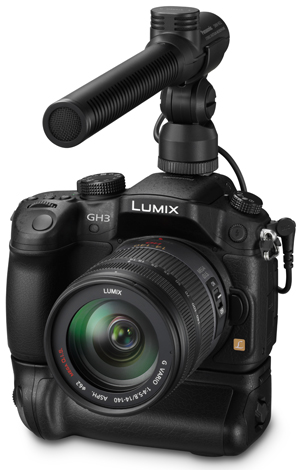
Panasonic: Early in the design process, we looked at the CAD data to see where the heat could escape. [Ed. Note: That is, how to conduct the heat away from the sensor and out to the outside environment.]
Under the sensor, we have a heat sink. But it's not just about the heat sink, it's total thermal management, and by using the CAD data, we found we could manage the heat better.
Part of the issue was the HDMI output. This needs a special power supply. It wasn't a good situation, and after making the body, it wasn't easy to get the heat from the HDMI out. But it turned out that the HDMI cable itself was a good heat sink!
DE: That is very interesting. So the HDMI cable actually helps carry away the heat from the HDMI circuitry.
Panasonic: [laughing] Yes. At first, we forgot the cable when we were working with the CAD data, but later the cable turned out to be a big help!
Compared with a PC or other device, we have to have so much margin in the design, because we have to guarantee image quality even under very bad conditions. With a PC, sometimes some of the processors can shut down. But in a camera, we always have to meet the spec for image quality, even in hot conditions. And we can't put in a fan.
DE: Speaking of the HDMI output, can you confirm that the GH3 can stream uncompressed HD video through the HDMI port, for use with an external recorder?
Panasonic: Yes, it isn't compressed. You can turn off all the on-screen indicators, so you can use the GH3 like a video camera with uncompressed 1080/60p HDMI output.
DE: Switching to high-speed AF now, does the 240 frame-per-second mode require focus to be set at the beginning or is it able to track-focus at that frame rate?
Panasonic: It depends on the combination of body and lens. Right now, with current products, only the body can go 240 fps. But by the time sales start, we'll have a firmware update for the 12-35mm lens, which will make it fast enough to focus at 240 fps with the GH3.
DE: We were also a little confused about some of the specs with continuous recording. As I mentioned before, in European PAL countries, we have that 29-minute 59-second limitation. It's limited there, and the rest of the world that does not apply. But the specs we received mentioned continuous recordable time and actual recordable time. The actual recordable time was always half of the continuous recordable time. What is the difference between continuous and the actual?
Panasonic: The camera will record up to four gigabytes of video in a single file, and then automatically make a second file when the first one is full. There's no gap when you play back the video, though. The actual recordable time is the length of video that can be recorded in a single four gigabyte file, and the continuous recordable time is that which can be recorded in eight gigabytes, spanned across two video files. Once eight gigabytes has been captured, recording stops. [Ed. Note: This 4GB per file limit is due to the FAT32 file system which is used by most modern cameras.]
DE: SMTPE time code is another big feature for professional video production. What did it take to add that feature, and was there a technical reason it wasn't offered earlier?
Panasonic: It's pretty easy to do; the reason is really the users we targeted. The GH1 and GH2 were intended for high-end amateurs, and they don't need time code. But actually, many professionals have been using the GH2. Before we developed the GH3, we did some research to see what the users needed, interviewing users in Germany, France, Japan, the UK and US, and other countries. I met with almost 100 professional video people, and we received very many requests from them. Before we did these interviews, we didn't know that time code was so important. Some amateur users even said we should have gen-lock! [laughs]
Previously, broadcast stations never used prosumer cameras, but people doing post production or making commercial films, to make them less costly, recently began using the Canon 5D Mark II and our GH2. They did so not only because they were less expensive, but also to be able to use single focal length, high-speed lenses.
One example is a German broadcaster, NDR, where a reporter used our GH2 for documentary recording. Of course, he could use a real professional camcorder, but it's a very big one, and takes two or three people to run it; one for the sound, one for the camera, and so on. But with this camera, it takes only one person, and it also puts less pressure on the subject. But of course, they have a guideline of 25p with 50 megabits/second recording, and DSLRs don't meet that guideline. So it was out of the research that we made many improvements, and timecode was one of them.
[Ed. Note: The GH2's normal maximum recording rate was 28 megabits/second, but you can use PTool to hack Panasonic's GH2 firmware to let it record 50 Mbps and even higher, given a fast enough memory card. Flow Motion is one particular GH2 hack that's been extensively developed and tested.]
DE: Another pro feature with the GH3 is the availability of balanced audio input. I think you have XLR jacks?
Panasonic: Not yet. But maybe in the future, we could make an external adapter and transfer the audio over WiFi or Bluetooth.
DE: Ah - you have WiFi, so why not use it for audio input. But Bluetooth – the camera doesn't have Bluetooth in it, does it?
Panasonic: Yes, the WiFi chip and Bluetooth are unified. It can do Bluetooth or WiFi, just controlled by software. Not at the same time, of course, but we could switch when we wanted to.
DE: Turning to still photography, we understand that the GH3's image processing has been upgraded. A briefing slide that I saw mentioned two new types of noise reduction processing. They were just abbreviated though, MNR and 3DNR. Can you tell our readers what is unique about the new processing? How is it different?
Panasonic: 3D maybe isn't such a good name. Normally, 3D would mean we use two frames or more, so it's maybe a little misleading. We have two passes, one for high-frequency areas, and one for low-frequency areas. We optimized both for the types of areas they cover.
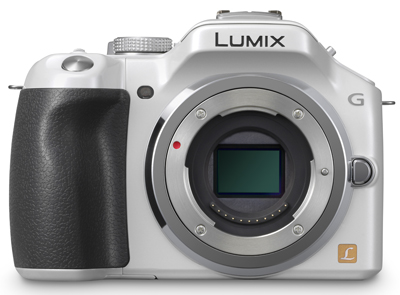
DE: That's what you had in the most recent cameras like those in the G5 and GF5 as well.
Panasonic: Yes, it's in those models, but wasn't in the GH2, as that was launched more than two years ago. So it's new since the GH2.
DE: Panasonic also makes professional camcorders. Other companies have created large sensor video cameras in different form factors than SLR style. Sony has the NEX-VG, Canon has the C300. Does Panasonic have any plans for something like that, that's more the conventional camcorder design?
Panasonic: We have three divisions: one for DSCs [Digital Still Cameras], one for consumer camcorders, and one for professional camcorders. Some key components may be used by all three, but we can't make any decisions for the pro camcorder group.
Compared to amateur camcorders, though, a good camcorder may have three 1/3-inch sensors. So the Micro Four Thirds sensor is 10 times bigger. Even pro camcorders only have three 2/3-inch sensors, so Micro Four Thirds is still bigger. So we have a lot of potential. It actually depends on image processing a lot. The GH2's motion image quality is a little better than the 5D Mark II.
DE: So you feel that the GH2's video quality is better than the 5D Mark II's?
Panasonic: Yes, it's not our engineers saying so. Many professionals have said that the GH2's video was better, even with a smaller sensor.
But compared to a professional camcorder, Micro Four Thirds is much better. It depends on the signal processing, but we also have so many pixels that we can do various kinds of pixel combining. Maybe this is some of why we're better than the 5D Mark II: we do better pixel combining. This is maybe why Canon prefers just an 8-megapixel sensor on their C300, because they have to combine just 2 x 2 pixels. Also, it's possible to read all pixels in real time.
DE: You mentioned that with the C300, they read out the entire frame in real time. So in a large format camera like the GH3, you are reading only some of the pixels; you don't actually read the whole array…
Panasonic: Yes, it's not possible to read out the whole array at 60p. So this means we have to do some pixel combining. We combine 2 x 2 pixels on the sensor, so that makes just one quarter the data that we have to read out. This makes it possible to read out at 60p. Then we combine again to get the 2 megapixel video image.
DE: Looking to the future, we are seeing several other manufacturers putting phase-detect elements on the focal plane, on the main image sensor. That's one way of overcoming some of the limitations of contrast-detect autofocus; but your CDAF is so fast. The question is, would there be additional benefit to having phase-detect elements too? It does tell you both the amount out of focus and what direction to move.
Panasonic: With contrast detect, we have to hunt a little, so phase detect would eliminate that. The issue with phase detect is that phase-detect pixels are a little darker. We have to consider pixel quality, and actually, it's very difficult for the processor to find which pixels are phase-detect. Also, the number of phase-detect pixels would be more than 10,000, so that's a lot of processing.
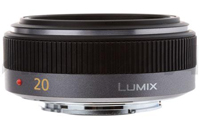
Also, with phase-detect, there is a limitation with the edges and the area that can be used on the imaging. With most lenses, pixels near the edge can't see the light coming from outside the frame that would be needed for phase-detect. This is a fundamental principle. With contrast-detect, there is no restriction.
DE: I'm not sure if this is something that you could answer. It would be more of a question for the lens design. We have been very impressed by the quality of Panasonic's optics, especially the 20mm f/1.7; that is a very, very popular lens. Does Panasonic have a different philosophy or approach in lens design that contributes to the high quality of your lenses?
Panasonic: We see a lot of demand all over the world for fast, fixed focal-length lenses, so that's what we've concentrated on. Yesterday, as part of the promotion for the GH3, we announced the 42.5mm f/1.2, which would be very good for portraits. And the 150mm f/2.8 will be on sale next year.
DE: We had a reader question about your power zoom lenses. These now cover a range from 12-175mm (24-350mm equivalents). The reader wanted to know if we can expect anything like a 100-300mm, a long telephoto zoom for the power zoom range. Any plans for anything like that?
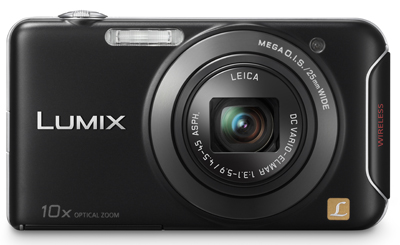
Panasonic: We really can't talk about future plans, but we'll certainly consider it.
DE: For the final question, going back to point-and-shoot cameras, WiFi connectivity to cell phones is suddenly a hot topic. You entered this area last year with the DMC-FX90, and improved it further with a recent firmware upgrade. You've also got it even near the entry level in this year's DMC-SZ5. What are your plans going forward? Do you think we will eventually see most cameras having WiFi built-in? How do you see that evolving in cameras?
Panasonic: Again, we can't talk about future products. But it is a very important function to have WiFi connectivity. I think many, many products will have this in them, but they will have to sell for more money. [laughs] Adding a radio increases the cost of the camera.
DE: Well, that's (finally) the end of my questions, thank you for a very informative interview. I always enjoy talking to you and getting some behind the scenes information, and it was a great help in clarifying some of the features of GH3. Thank you again for your time.
Panasonic: Thank you very much.
